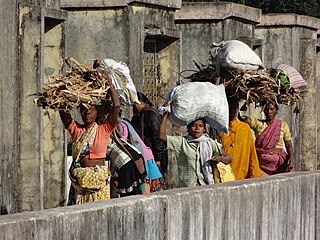Bharno block is a CD block that forms an administrative division in the Gumla subdivision of Gumla district, in the Indian state of Jharkhand.
Bishunpur block is a CD block that forms an administrative division in the Gumla subdivision of Gumla district, in the Indian state of Jharkhand.
Chainpur block is a CD block that forms an administrative division in the Chainpur subdivision of Gumla district, in the Indian state of Jharkhand.
Dumri block is a CD block that forms an administrative division in the Chainpur subdivisionS of Gumla district, in the Indian state of Jharkhand.
Ghaghra block is a CD block that forms an administrative division in the Gumla subdivision of Gumla district, in the Indian state of Jharkhand.
Gumla block is a CD block that forms an administrative division in the Gumla subdivision of Gumla district, in the Indian state of Jharkhand.
Kamdara block is a CD block that forms an administrative division in the Basia subdivision of Gumla district, in the Indian state of Jharkhand.
Palkot block is a CD block that forms an administrative division in the Basia subdivision of Gumla district, in the Indian state of Jharkhand.
Raidih block is a CD block that forms an administrative division in the Gumla subdivision of Gumla district, in the Indian state of Jharkhand.
Sisai block is a CD block that forms an administrative division in the Gumla subdivision of Gumla district, in the Indian state of Jharkhand.
Kolebira block is a CD block that forms an administrative division in the Simdega subdivision of Simdega district, in the Indian state of Jharkhand.
Bano block is a CD block that forms an administrative division in the Simdega subdivision of Simdega district, in the Indian state of Jharkhand.

Bansjore block is a CD block that forms an administrative division in the Simdega subdivision of Simdega district, in the Indian state of Jharkhand.
Bolba block is a CD block that forms an administrative division in the Simdega subdivision of Simdega district, in the Indian state of Jharkhand.
Jaldega block is a CD block that forms an administrative division in the Simdega subdivision of Simdega district, in the Indian state of Jharkhand.
Kurdeg block is a CD block that forms an administrative division in the Simdega subdivision of Simdega district, in the Indian state of Jharkhand.
Pakartar block is a CD block that forms an administrative division in the Simdega subdivision of Simdega district, in the Indian state of Jharkhand.

Thethaitangar block is a CD block that forms an administrative division in the Simdega subdivision of Simdega district, in the Indian state of Jharkhand.

Albert Ekka (Jari) block is a CD block that forms an administrative division in the Chainpur subdivision of Gumla district, in the Indian state of Jharkhand.

Simdega block is a CD block that forms an administrative division in the Simdega subdivision of Simdega district, in the Indian state of Jharkhand.





